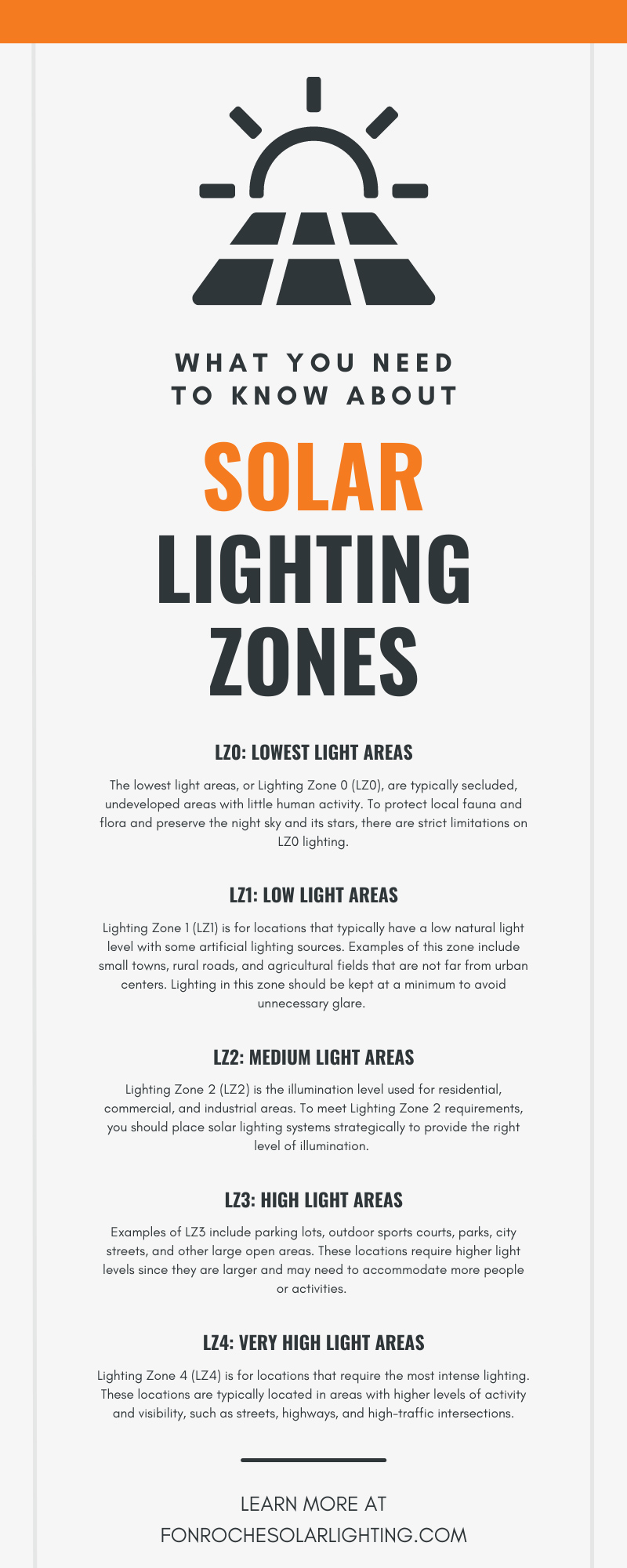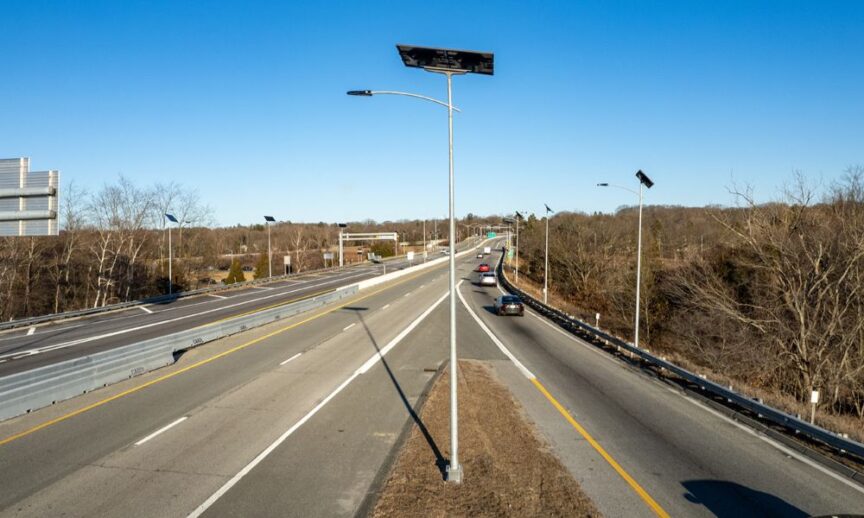Are you considering implementing a solar lighting system in your city? It’s an exciting endeavor that can save you money and help protect the environment, but there are some important guidelines and regulations to be aware of first. In this post, we’ll explain what there is to know about solar lighting zones so you can better understand what requirements may exist before investing in a commercial solar lighting project. We’ll explain why these zones exist and how they might impact your plans for creating an energy-efficient lighting project. In some states and municipalities, these zones are strictly enforced while in other areas, they are guidelines for good lighting practice.
What Are Solar Lighting Zones?
Solar lighting zones are the categories used to define a specific area’s needs and requirements when it comes to solar lighting design. These zones are based on the amount and type of light needed in each area, as well as environmental factors such as geographic location and existing lighting levels. To ensure the most effective and efficient solar lighting system, it is important to understand the different types of solar lighting zones.
What Are the Different Solar Lighting Zones?
LZ0: Lowest Light Areas
The lowest light areas, or Lighting Zone 0 (LZ0), are typically secluded, undeveloped areas with little human activity. These places often have very low natural light levels and low levels of light pollution. Examples include quiet campsites, parks, nature trails, and remote areas with few to no artificial lighting sources. These areas are sometimes called Dark Sky Zones or Conservation Areas.
To protect local fauna and flora and preserve the night sky and its stars, there are strict limitations on LZ0 lighting. In these zones, artificial lighting should be sparse. Solar lighting configured with a dark-sky-certified fixture is the preferred choice for illuminating these zones. It does not contribute to local light pollution, has no need for power lines, and is powered by renewable energy. Solar lighting also offers the flexibility to install lights in places that may not be close to power sources, where running cables would be too costly or where there are concerns about site disruption.
LZ1: Low Light Areas
Lighting Zone 1 (LZ1) is for locations that typically have a low natural light level with some artificial lighting sources. Examples of this zone include small towns, rural roads, and agricultural fields that are not far from urban centers.
Lighting in this zone should be kept at a minimum to avoid unnecessary glare. Lighting standards in LZ1 should not exceed the average natural light levels of the area, as this can create light pollution and disrupt wildlife migration patterns. Light fixtures in these areas should limit light trespass and provide only the necessary amount of lighting for safety.
LZ2: Medium Light Areas
Lighting Zone 2 (LZ2) is the illumination level used for residential, commercial, and industrial areas. This zone requires higher levels of illuminance than LZ1. It is suitable for areas with moderate pedestrian foot traffic and mainly includes parking lots, public parks, walkways, pathways, and roads.
To meet Lighting Zone 2 requirements, you should place solar lighting systems strategically to provide the right level of illumination. Dusk-to-dawn programming ensures that lights turn on when they’re needed and turn off when they’re not. You should also be sure to place solar lights in spots where obstacles such as trees or buildings won’t block the light. It’s important to remember that the goal of lighting fixtures in LZ2 is to provide a reasonable level of illumination, not to create an overly bright environment. In residential areas, shields can be used to prevent light trespass into adjacent property.
LZ3: High Light Areas
Lighting Zone 3 (LZ3) is the second-brightest lighting zone. Examples of LZ3 include parking lots, outdoor sports courts, parks, city streets, and other large open areas. These locations require higher light levels since they are larger and may need to accommodate more people or activities.
In these areas, there needs to be ample illumination to create a safe and comfortable environment. The higher light levels necessary to achieve this safety can cause more energy usage, making it important to consider cost-efficient lighting solutions such as solar lighting. Solar lighting provides long-term savings since it does not require any additional electricity or wiring, leading to reduced maintenance costs.
LZ4: Very High Light Areas
Lighting Zone 4 (LZ4) is for locations that require the most intense lighting. These locations are typically located in areas with higher levels of activity and visibility, such as streets, highways, and high-traffic intersections.
In these zones, efficiency is absolutely essential to reduce energy costs. Solar lighting systems provide the perfect solution, as they offer optimal illumination while conserving energy. It’s particularly important to choose products with a proven reliability record for these applications. This helps reduce light pollution and preserve the environment without sacrificing visibility and safety for residents.
How To Determine the Correct Lighting Zone for Your Project
The final thing you need to know about solar lighting zones is how to tell what zone your project area falls under. To determine the correct lighting zone for your project, you’ll need to consider the amount of ambient light available in the area, as well as any local regulations that may be in place. You can also consult with a solar lighting expert who can provide advice on how to comply with all relevant codes and standards. With this knowledge, you can develop a comprehensive plan for your project that meets the needs of your area without compromising on efficiency or safety.
Solar lighting zones are an important part of any commercial solar lighting project, as they provide guidelines to ensure projects meet local regulations and requirements. By understanding what each zone is and how it applies to your specific location, you can work toward creating an energy-efficient project that keeps people safe and protects the environment.
At Fonroche Lighting America, we have outdoor solar street lamps to accommodate the needs of any lighting zone. Our lamps provide bright, efficient lighting that meets the most demanding environmental regulations. With our comprehensive selection of products, we guarantee you’ll find the perfect solar lighting solution for your needs. Contact us today to learn more about our solar street lamp options and get started on creating a brighter future with sustainable outdoor lighting solutions.


